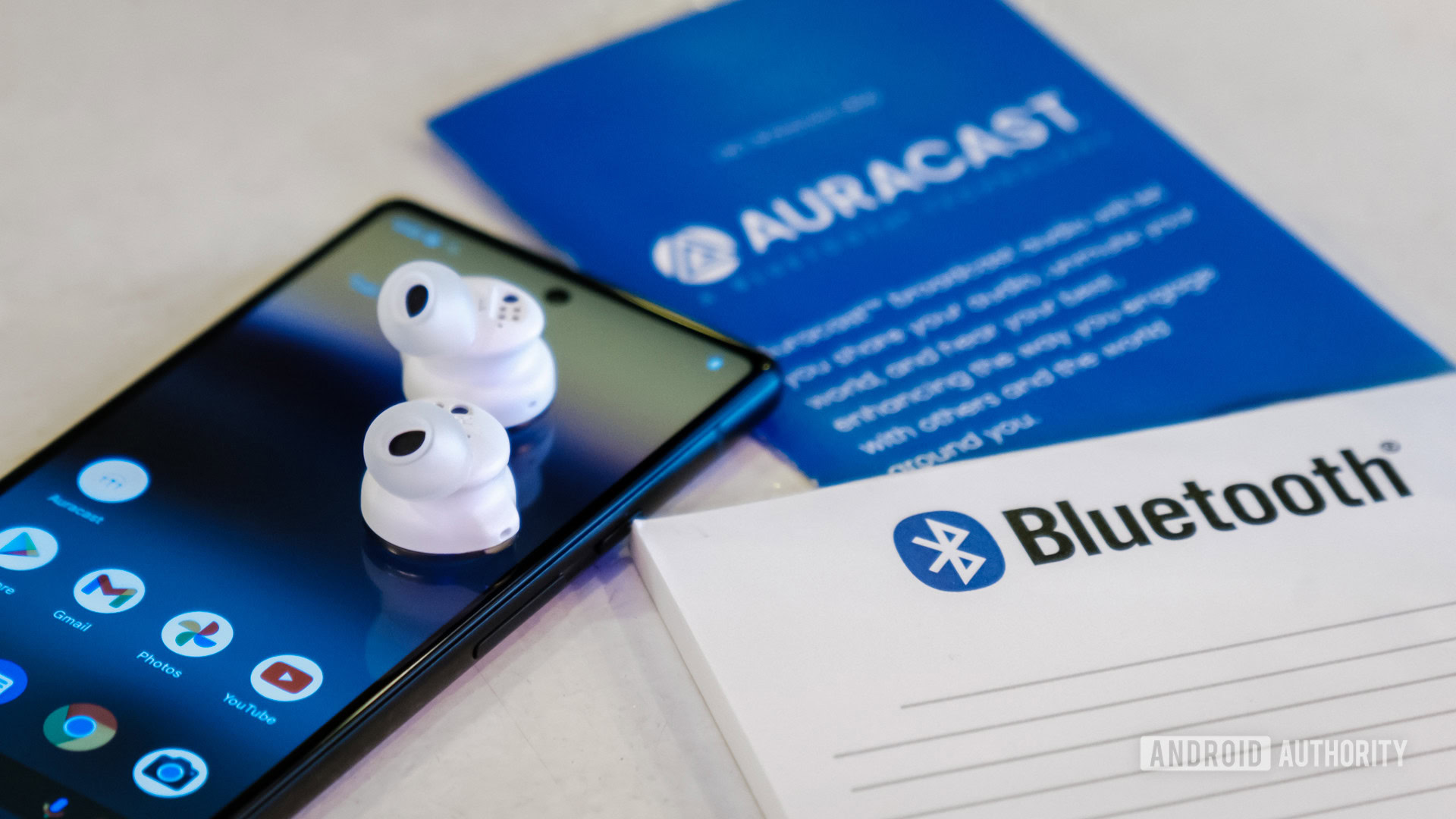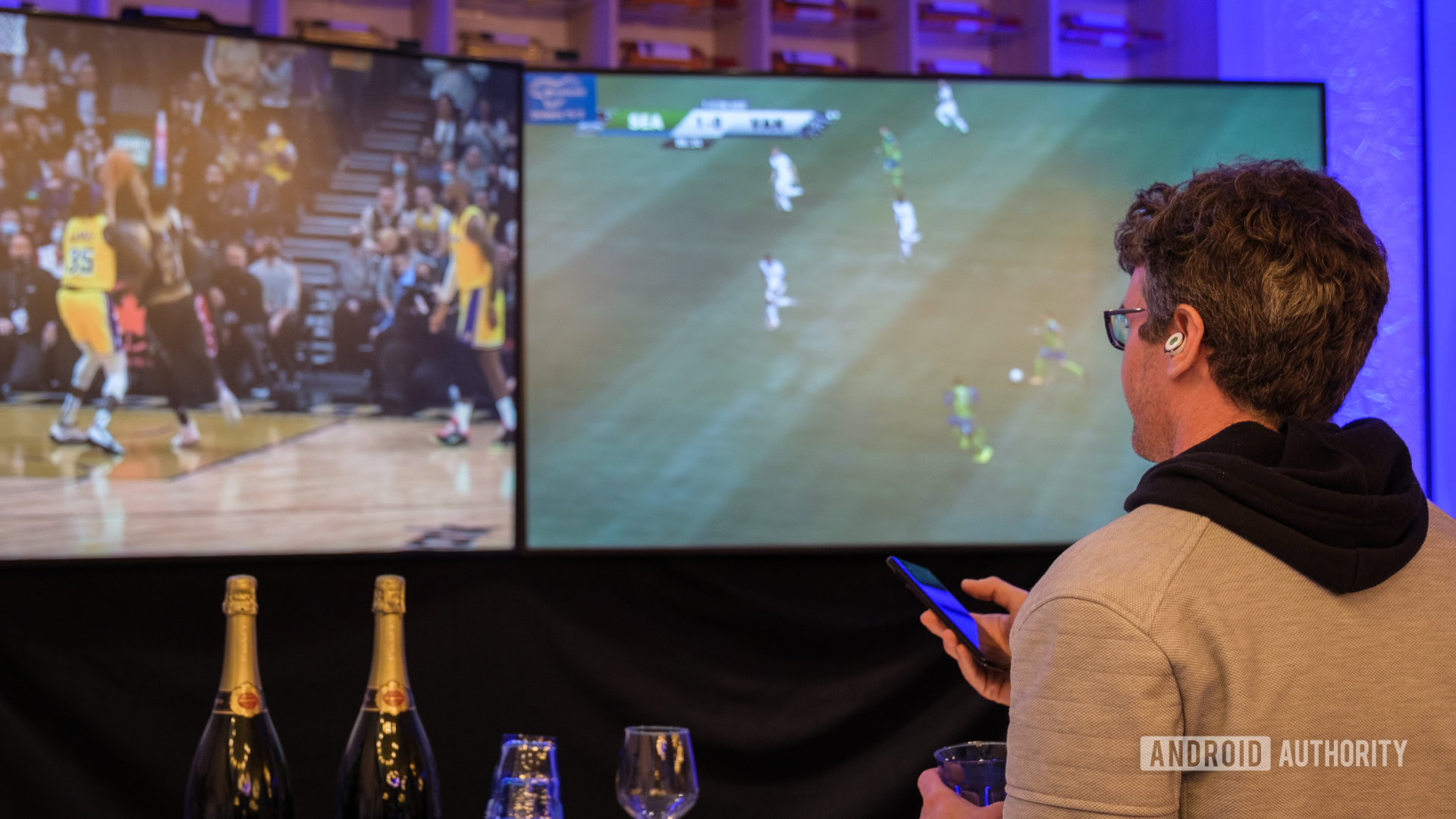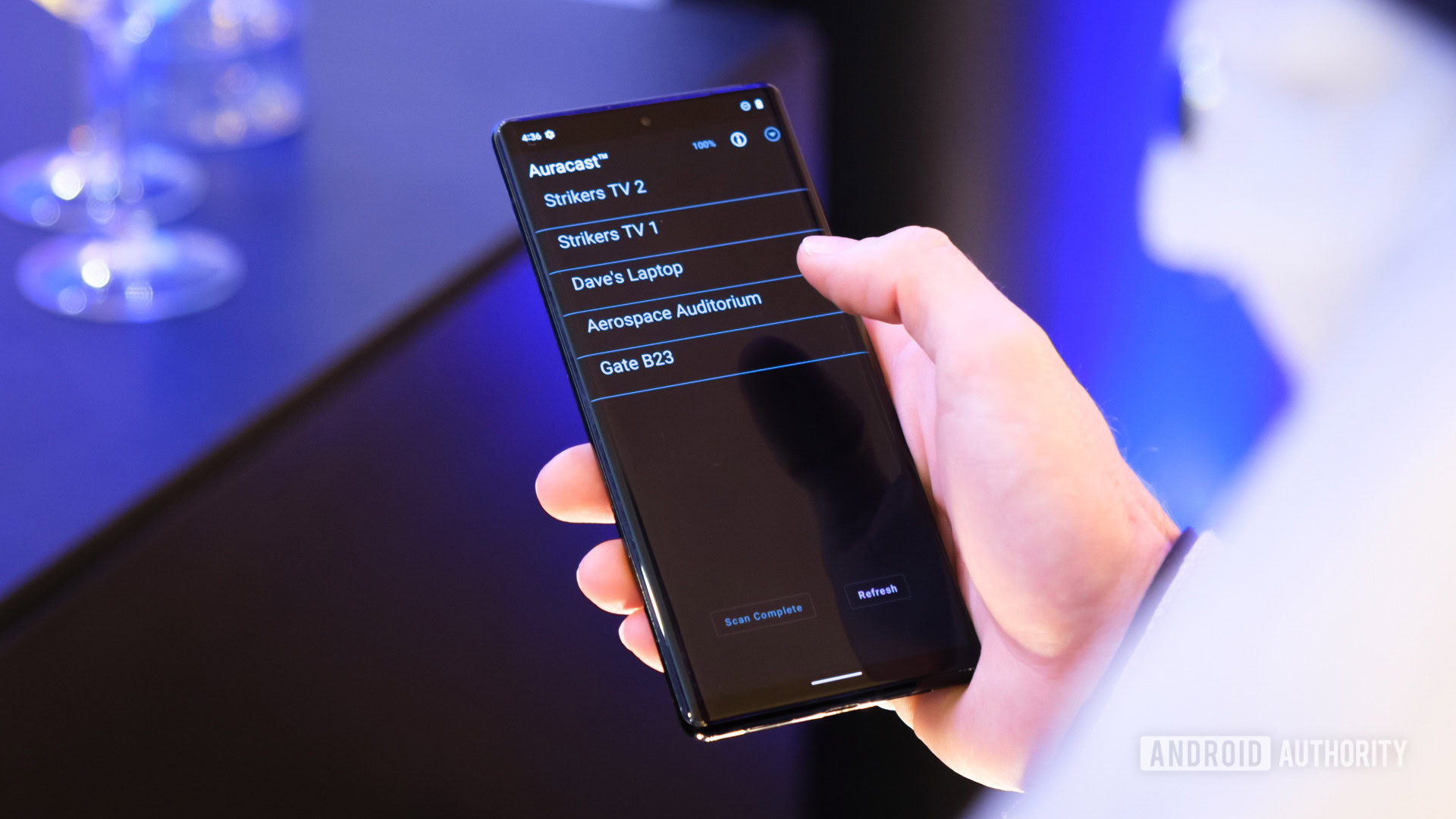Affiliate links on Android Authority may earn us a commission. Learn more.
Ears-on with Bluetooth Auracast: Multi-device audio made easy
Published onMarch 5, 2023

Bluetooth provides us with a huge range of features, from connecting peripherals to streaming music to wireless earbuds. The standard is poised to become even more useful thanks to Auracast audio broadcasting capabilities.
While not strictly brand new (the technology was announced in 2022), we spent some ears-on time with Aurcast at MWC 2023. Based on our experience, broadcast capabilities are set to reshape how we think about Bluetooth audio.
What is Bluetooth Auracast?
Auracast is a one-to-many Bluetooth connection that acts essentially like traditional radio broadcast and hearing aid loop systems. A compatible Bluetooth device can subscribe (and unsubscribe) to broadcasts at any time, without the hassle of pairing. Auracast is part of the Bluetooth LE Audio specification, specifically the broadcast audio sub-section. Broadcast and receiver devices must support this protocol to work, so you’ll need a new pair of headphones to benefit. However, LE Audio capable smartphones can, in theory, act as a middleman too, opening the door for a level of backward compatibility with existing earbuds.
Broadcasting opens up a seemingly endless selection of public and private use cases.
The use cases are wide-ranging, from public service announcements to watching a video with friends on a flight. It’s a core technology for ushering in the age of hearables too. At MWC, Bluetooth SIG showed us various scenarios, including subscribing to gate information at an airport, tuning into a conference speaker’s audio stream, and flipping between TV streams in a sports bar. We were certainly impressed by the range and quality of the demos on display, which all came across as genuinely useful.
Auracast is a one-to-many broadcasting system for Bluetooth audio. Broadcast devices constantly advertise audio streams to Assistant devices, such as smartphones, which establishes a direct connection between the transmitter and receiver, such as a pair of headphones.
Bluetooth broadcasting has limitless potential

Starting with announcement applications, you can listen to content on your phone as usual, with interruptions only occurring when the subscribed broadcast makes an announcement. This could be a gate number at an airport or a notification that your bus has been delayed.
The broadcast nature of the tech makes connecting even more seamless than connecting to a Wi-Fi network, but the audio’s low latency is arguably even more impressive. Bluetooth Auracast establishes a direct audio connection between the transmitter and receiver, such as between a TV and earbuds, enabling latency in the tens of milliseconds. That’s important because it minimizes the risk of audio and video appearing out of sync.
Auracast is supported as part of the LE Audio specification. Bluetooth 5.2 incorporated LE Audio features into the core low-energy specification.
Demos at MWC also showcased creating private connections via Auracast, such as sharing video audio from a laptop or smartphone to multiple earbuds. Connections can be password protected, just like creating a Wi-Fi hotspot from your smartphone. In fact, that’s a pretty good analogy for how private Auracast works.

Unfortunately, the Bluetooth SIG is only in the business of creating specifications; it’s completely up to end manufacturers to implement features like Auracast. As such, it’s unclear what final products will look like when they hit the market and how universal and seamless support will be.
For instance, Bluetooth SIG showcased an Auracast app for scanning and subscribing to broadcasts. It worked well, but the SIG has no plans to release software like this. Instead, it may be up to handset or service providers to build their own apps, which could be an interoperability nightmare. Thankfully, LE Audio is integrated into Android 13, so Google may build scanning capabilities directly into future Android versions. Done correctly, connectivity can be as simple as scanning a QR code, so we’ll have to hope implementers get this right.
Success or failure of Auracast all depends on an easy-to-use, universal implementation from Bluetooth's partners.
So when can you hear all this for yourself? According to the SIG, Bluetooth Aurcast headphones and smartphones (chipset support is already here) should hit the market this year for private casting. Once there’s a solid consumer foundation, we’ll likely see public broadcasting applications come online in the following years.
We’re likely still years rather than months away from mass adoption then, but that doesn’t stop the demos we saw from being genuinely impressive and, dare I say it, even exciting.